5 Ways We’re Using Artificial Intelligence as a Web Design Agency Right Now

The buzz surrounding artificial intelligence, or A.I., has been inescapable (practically deafening) for months now. Beyond the huge deals being made by players like Microsoft and big investments by other MAMAA (Meta, Apple, Microsoft, Amazon, and Alphabet) companies, for business owners, there’s the sudden promise of increased efficiency and faster answers to tough or previously intractable problems. At the same time, for workers, headlines about how A.I. will steal jobs and make humans obsolete have been popping up everywhere, especially in the creative world. When computers can create art or solve complex problems in seconds, where does it leave humans?
We here at ETR have always been in the camp of embracing new technology, and for us A.I. is not different. So we are testing and learning with the many tools powered by A.I. that have arrived on the scene recently in order to see how they could help improve our processes. We wanted to share some early examples of how they have been able to speed up our work process and allow us to be even more creative humans.
1. A.I. as a starting point for code
As developers building websites and apps, we often come across tricky programming problems. We believe that A.I. can provide a starting point for brainstorming how to tackle a coding challenge.

In the example above, one of our developers wanted to gain an understanding of a new tool we were beginning to work with. Rather than search the documentation and piece together how to use it for our specific use case, we could just ask ChatGPT, an artificial intelligence chatbot, to provide us an example.

ChatGPT is also able to follow the thread of the conversation and make adjustments based on our input without having to start over. In this example A.I. is providing our developer with 1:1 coaching on how to use a new tool, specific to our exact needs. ChatGPT not only gives us the code we need, but explains it, making it a great learning tool. When our developers can quickly reach understanding about complex coding problems, there is potential to save hours – not just for them, but for clients, freeing up valuable bandwidth for more innovative activities.

A.I. can help developers get the knowable, tedious code out of the way quickly so they can focus on the more complex and unique problems. The less time we need to spend recreating the patterns that are already established, the more time we will have to venture into creating more unique, interactive, and usable enhancements.
2. Using A.I. to Create Unique Visual and Audio Assets
Artificial intelligence can also do amazing things with imagery, sound, and video. When it comes to web design, one of the biggest needs for a unique and well designed website is having good visual assets. It’s important to have imagery and video that are high quality, unique to the brand, and not too stock-photo like. This means that a company either needs to have their own in-house photography team, or the time and money to find, buy and edit stock images so that they feel unique to the brand. A.I. has the potential to make that a lot easier by creating unique and royalty-free assets based on a prompt. It will never replace a custom art-directed photo shoot or assets made from scratch, but for quick blocking and tackling, or fast concepting, it’s a great option.
For example, on most of our ETR insights articles, we use a style we developed for our brand that consists of a white line drawing on a grainy blue gradient background. The process of creating this involves finding a stock line drawing that fits the theme of the article and then editing it to be the correct color on the right background.
Could A.I. do this for us? We tried training an image generating A.I., Stable Diffusion, on what this style looked like by feeding it some examples, and then asked it to create its own.

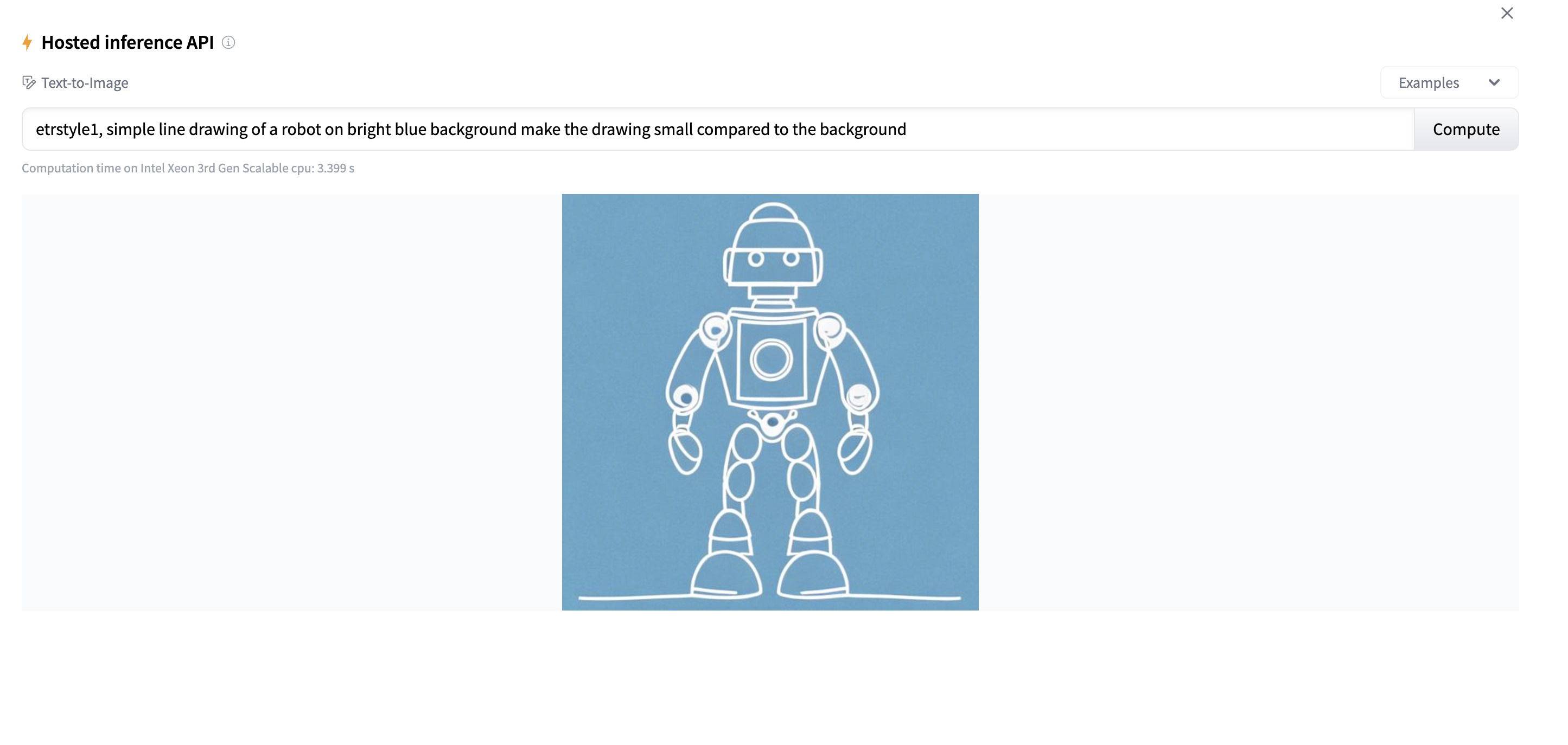
The style isn’t perfect, but with more fine tuning it could get pretty close. We modified one of the line drawings it gave us to make it high resolution and have the right background color, and used it for the cover image of the article.
We also tried coming up with some unique assets with DALL-E 2 to help convey a concept in a presentation — someone talking loudly on their cell phone during a boat ride. Based on this, A.I. image generation still has a little bit of fine tuning needed to get out of the uncanny valley of not-quite-right imagery. The results here are a bit funny, but fine-tuning prompts can result in some amazing imagery.
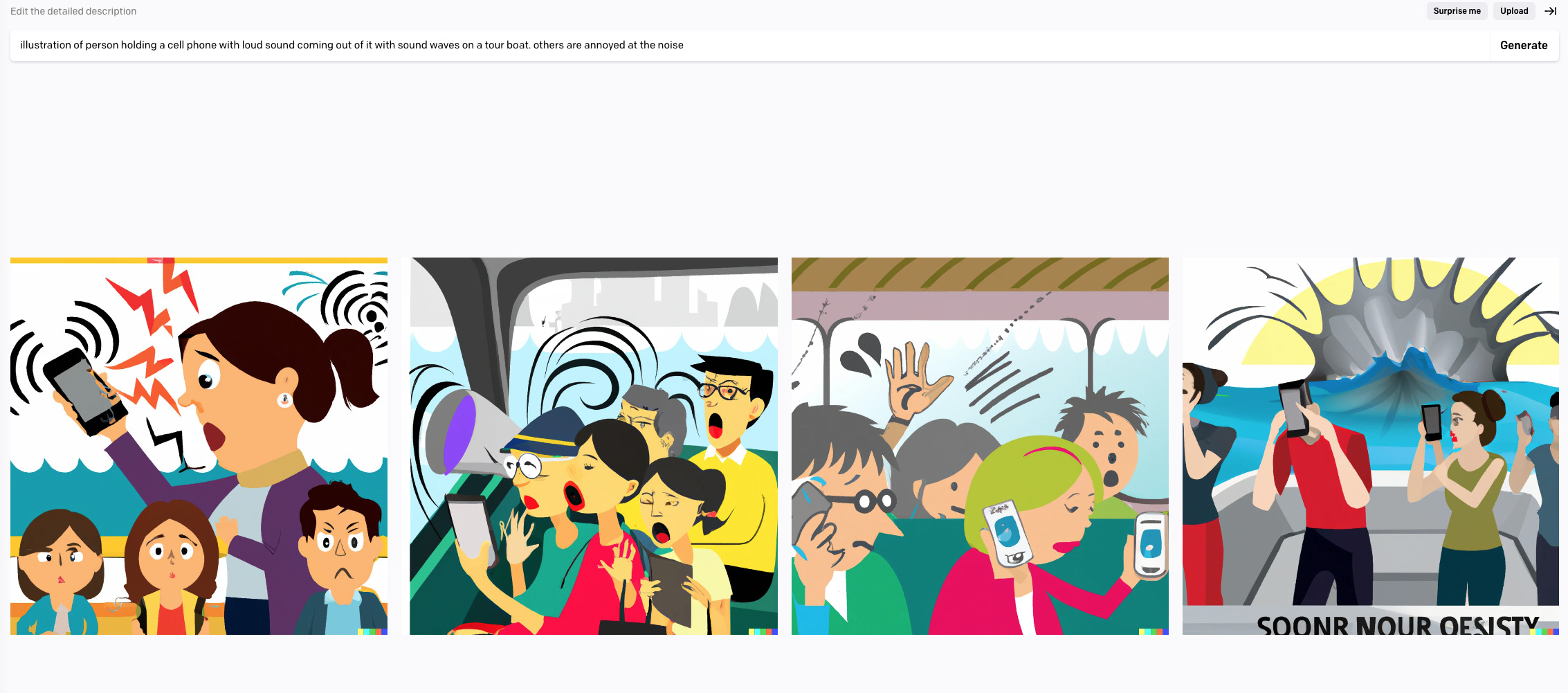
Companies like Adobe Stock are embracing generative A.I. content, allowing contributors to submit and get paid for the content as long as they have the rights to it, though who exactly should have the rights to generative A.I. art is still hotly debated.
3. Using A.I. for quantitative user research
When working with quantitative user research data, or data that is number based and includes larger quantities of information, we often have to open a spreadsheet and start number crunching to analyze our results. A.I. has been helping our research team remember and apply formulas we need to use in context.
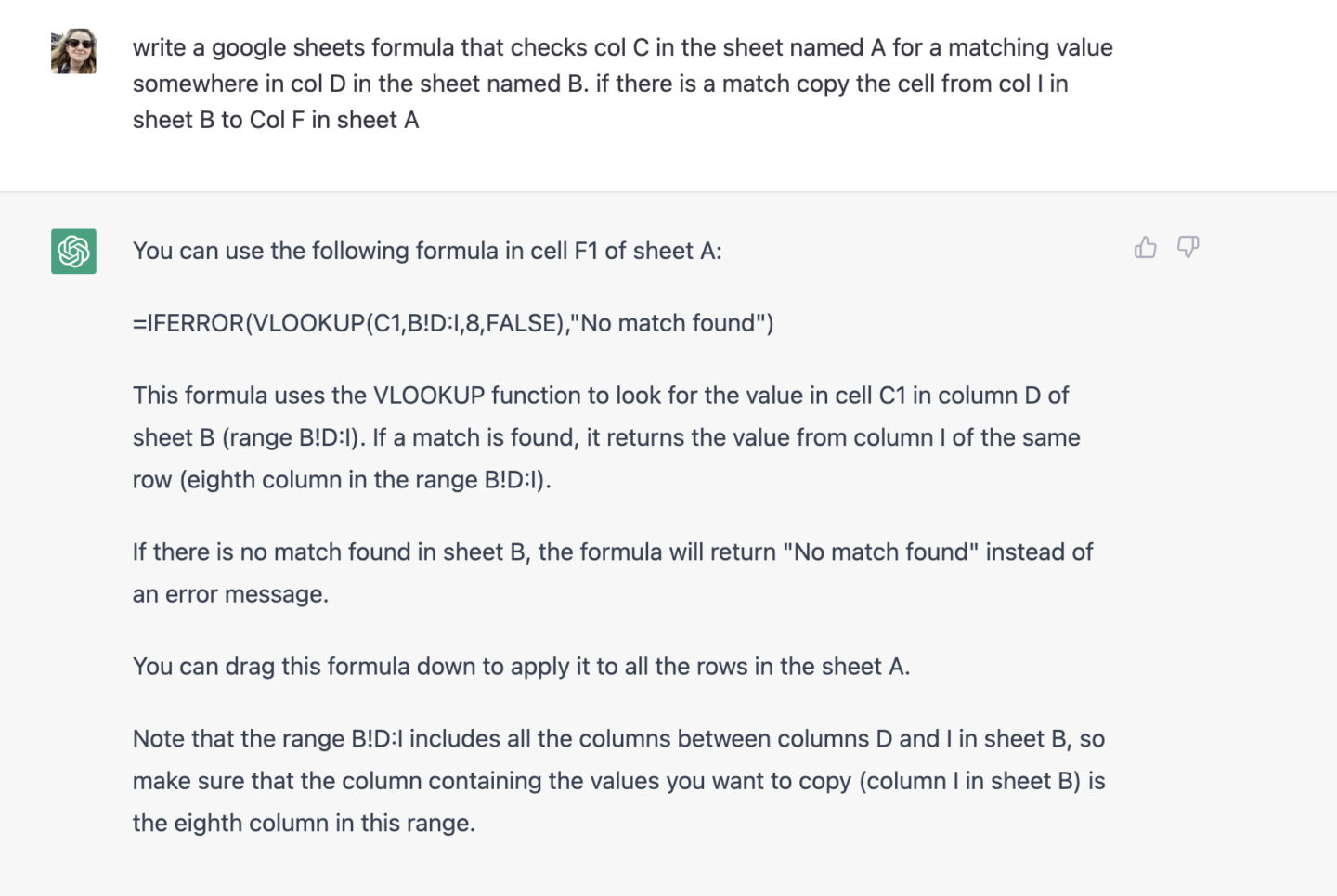
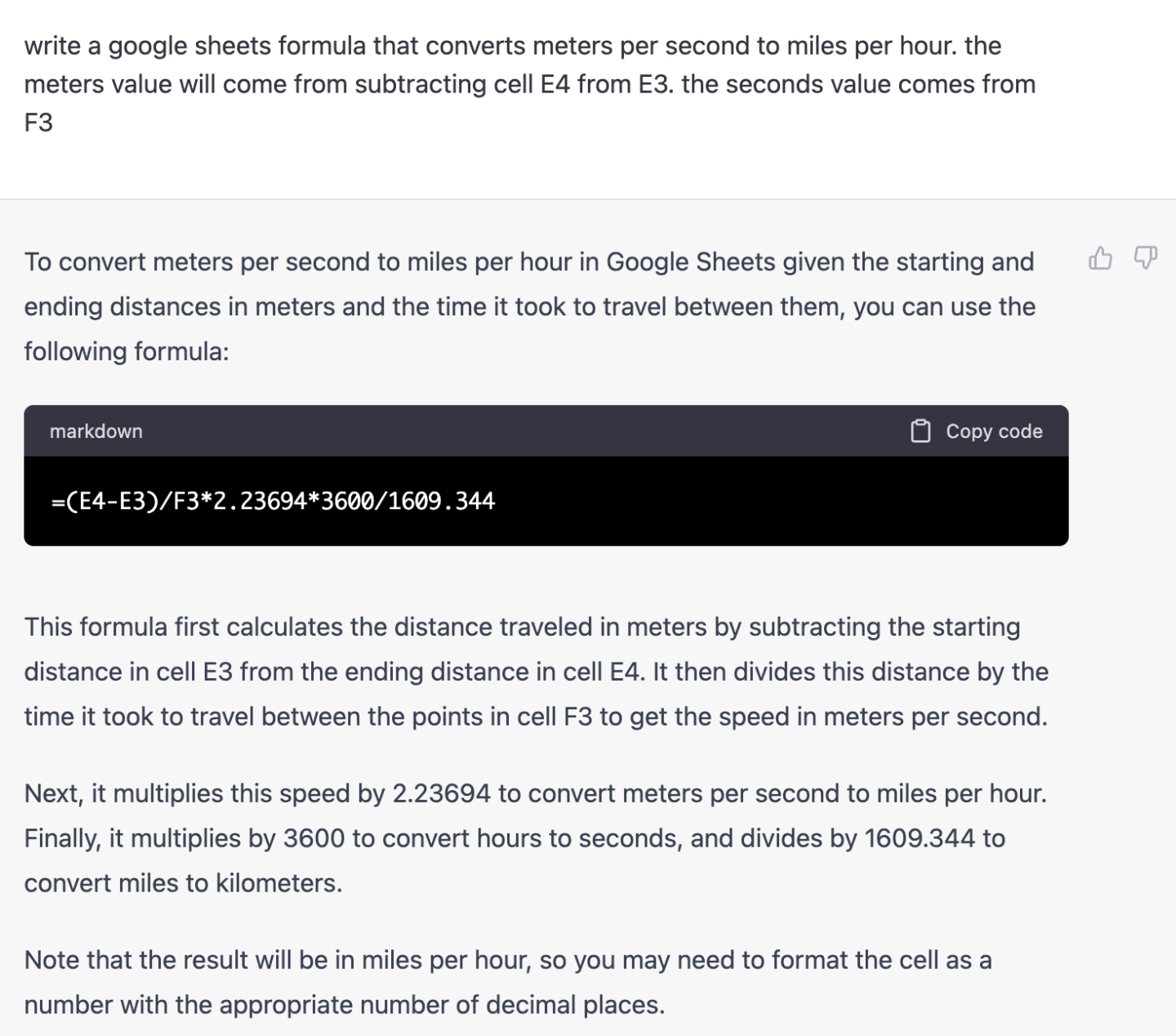
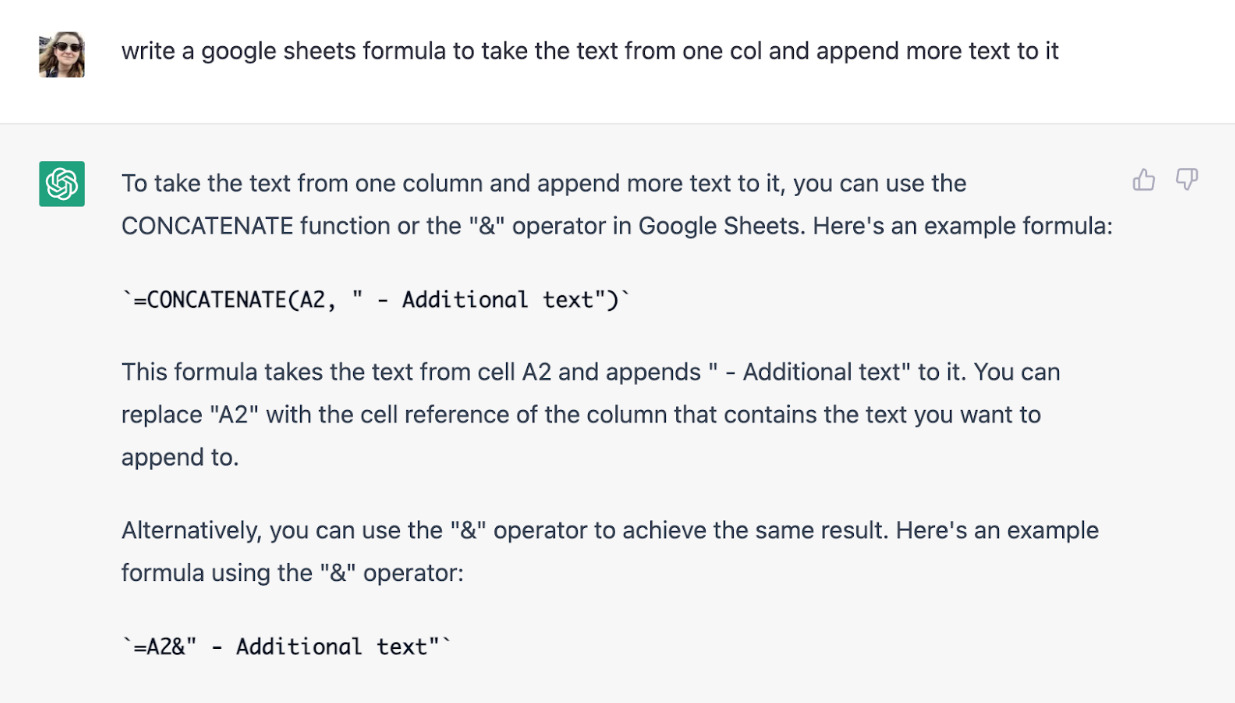
4. Using A.I. for qualitative user research
Qualitative user research is often considered to be more “human-focused” and all about empathy, so it seems odd at first to employ A.I. for this method. However, just like our other techniques, we only seek to use A.I. in this way to speed up our process where we can and stretch our creative thinking.
Part of preparing for qualitative user research like interviews involves preparing a list of questions to guide the conversation. Could A.I. help us with that?
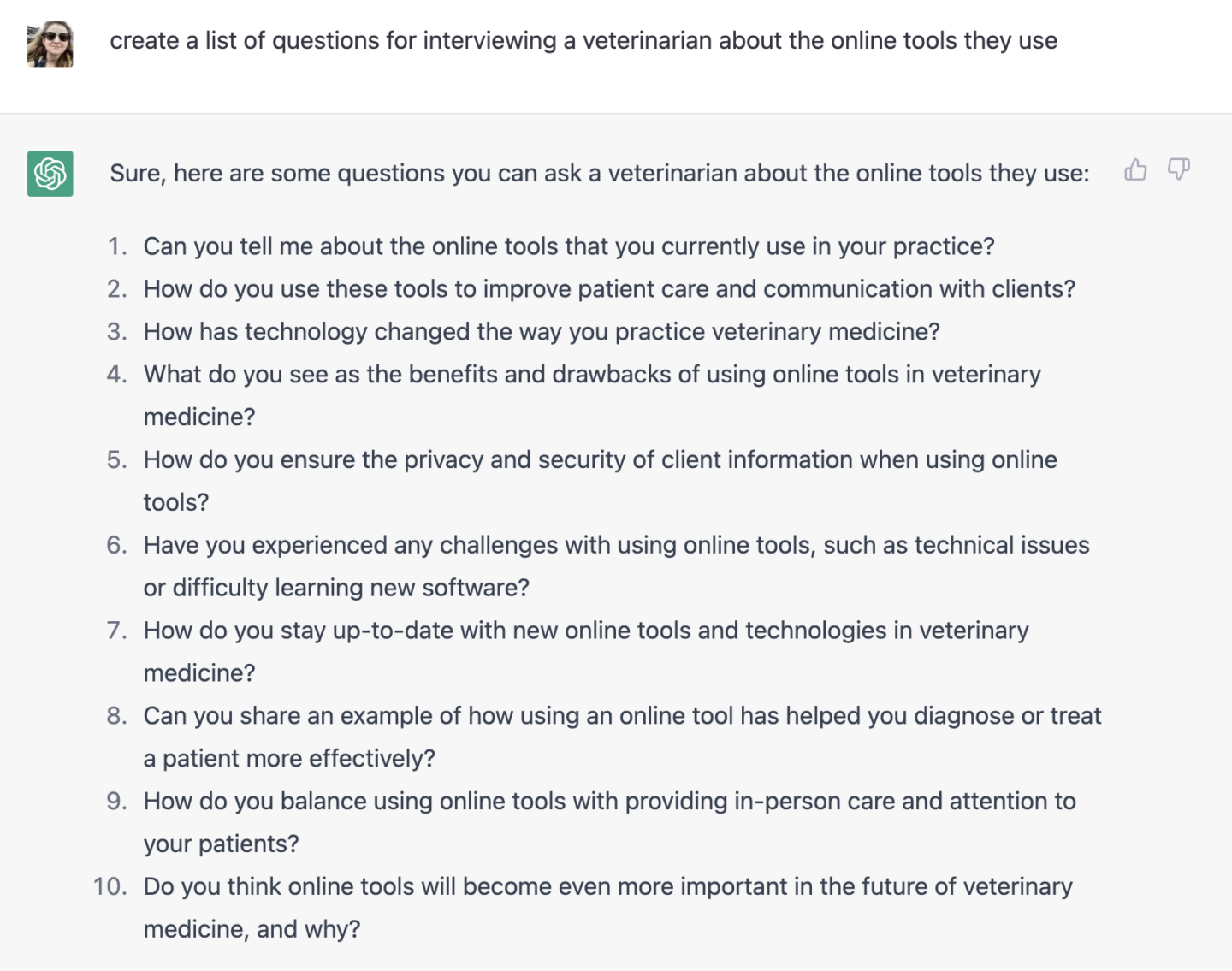
Now, this isn’t the exact question list we would go straight into an interview with. But prompting ChatGPT to come up with questions for us based on different scenarios can help us brainstorm what questions to add. Maybe asking about privacy and security related to the topic wasn’t something you had thought of yet. Thanks A.I.!
What about A.I. teaching us empathy? It feels like a stretch, but ChatGPT was trained on a massive amount of data that probably included written accounts of the wants, needs, goals, and frustrations of people from all walks of life. Could A.I. help us get into their mindsets?

Data like this can help us get into the mindset of our target audience prior to interviewing them, or help us write helpful website copy later on. Of course we should always validate that the information we learn about an audience from A.I. is accurate, and this is no substitute for human-to-human interviews, but we think it can provide a really helpful start.
What about after the interviews have been conducted and it’s time for analysis? This is where we think A.I. can really speed things up. After we have a boat load of interview transcripts, the next step is to pore over the data, looking for themes. It’s very time consuming. A.I. could easily scan these transcripts in seconds and bring useful patterns and themes to our attention. Again it’s no substitute for the human mind, but it could act as a second pair of eyes, identifying areas we may have missed.
We fed ChatGPT a small sample from a recent interview with a veterinarian to see what it could come up with. (Interviewee name changed for privacy)
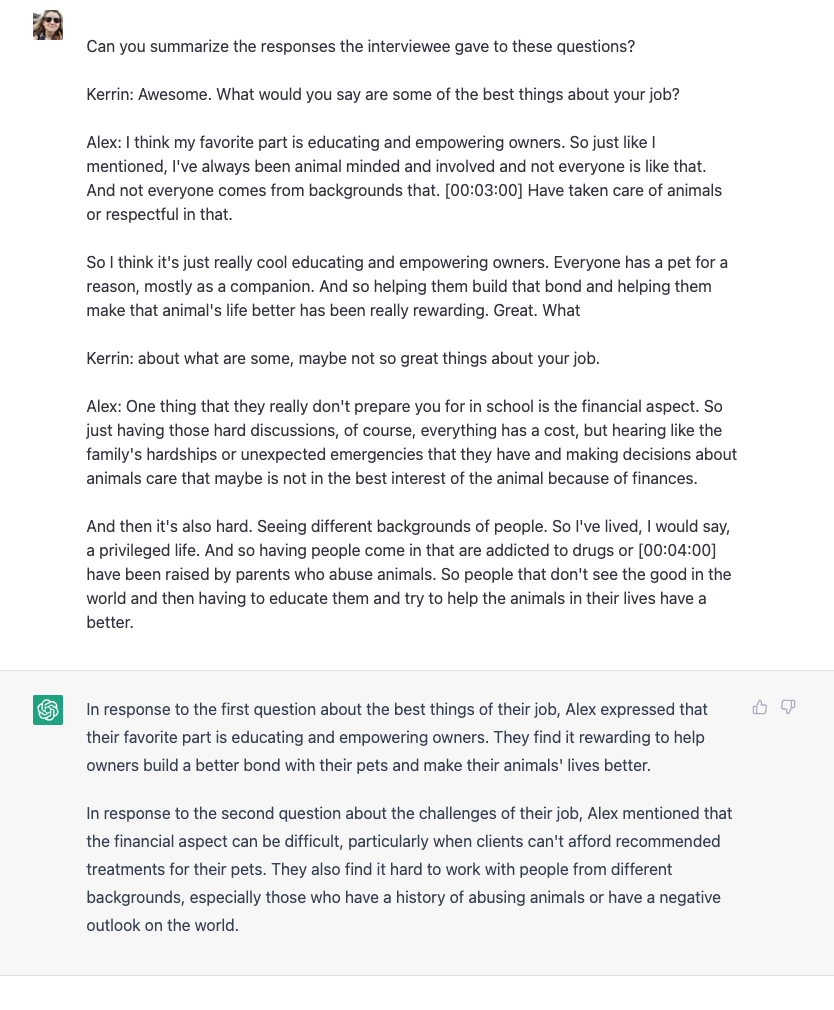
ChatGPT was able to succinctly summarize the core points made in this interview.
Services like Notably.AI, which claims to help you analyze user research faster with artificial intelligence are popping up to address this opportunity.
5. Using A.I. to generate ideas and create new products
Continuing with the theme of summarizing information, ChatGPT is really good at taking in all sorts of information and providing a succinct summary, explanation, or edit. This has endless uses for business of all kinds, like summarizing a lengthy email exchange.

Many A.I. technologies are giving access to their APIs (Application Programming Interfaces) to enable developers to create apps using their systems. Our Director of Engineering, Ryan Ogden, has been experimenting with this possibility in a variety of different ways, such as a plugin that can be added directly to email applications for quick summarization.

Soon Gmail itself should be rolling out these features. Development of A.I. products is moving at a breakneck pace, and everyone is trying to hop on the bandwagon.
It was recently Ryan’s birthday, and clearly his enthusiasm for A.I. has spread throughout the office, since this is how coworkers chose to celebrate:

An explosion of A.I. powered apps and debate
We predict that the trend of artificial intelligence isn’t going away anytime soon, since it has already proven extremely useful in these early days of its widespread availability. More and more apps will begin integrating A.I. as a part of their offering, and we can definitely expect much more excitement and debate to come.
Don’t expect services like ChatGPT to continue to be free forever. The app currently states at the bottom of its page that it is in a “Free Research Preview” as the team collects data on its usage and continues to fine tune the technology. GPT plus was recently announced for $20/month, giving you access to the latest updates and faster response times.
The ethics of A.I. will surely continue to be a major topic of discussion. It’s our duty as early adopters of this technology to think about the impact it will have on the world, remain diligent on the ways it could potentially be abused, and use our human ability to think critically to evaluate whether it is providing accurate and useful information.
Bonus use case: A.I. for writing conclusion paragraph
It’s only fair to end an article about all the great uses and shortcuts we can gain from artificial intelligence by having artificial intelligence wrap this up for us. Take it away, ChatGPT.
In conclusion, as web design agencies face the challenge of staying competitive in a rapidly evolving digital world, they are increasingly looking towards artificial intelligence (A.I.) to optimize and streamline their processes. The use of A.I. in web design is still in its early stages, but it has the potential to revolutionize the way we approach web design. From assisting developers with coding and user research to generating unique, on-brand assets, A.I. can help improve productivity and efficiency while freeing up creative time for designers to focus on more complex, higher-level tasks. While concerns around the impact of A.I. on the job market continue, it is important for web design agencies to explore the potential of these tools and embrace them where appropriate.
Thanks to Ryan Ogden, Joe Rosenthal, and James Cole for edits.
More Insights
Six Design Trends You Will See in 2024
In the field of design, trends come and go. As technologies evolve and user preferences shift, design trends naturally progress and adapt. Keeping up with the latest trends helps brands stay current and resonate more with consumers as their preferences evolve. Last year, we highlighted dynamic color, personalization, and simplicity. In 2024, we envision designers
‘Tis the Season to Commit to Exceptional Experiences: UX Resolutions for 2024
With December upon us, our thoughts turn to resolutions—the ways we can be better in the year to come. For us as an agency, that means constantly raising the bar for ourselves, our clients, our communities, our industry, our families, and our friends. For our UX team, whose job it is to advocate for users,

